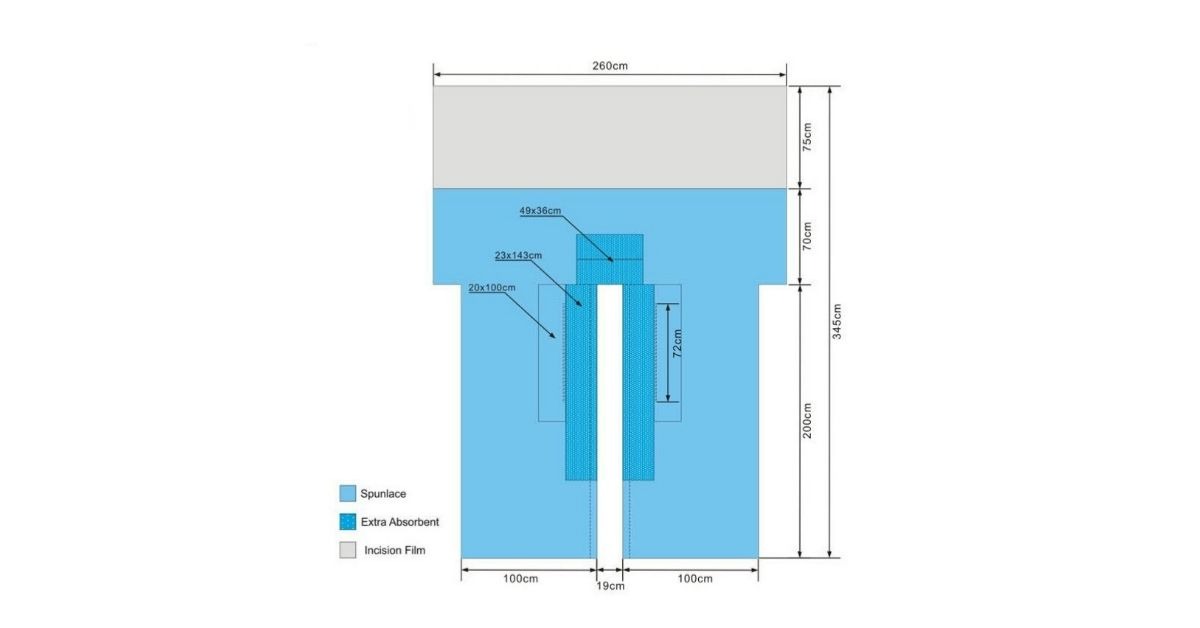How can you protect surgical patients from surgical site infections? Sterile surgical drapes and sterile instrument fields are the most effective way to do that. When is it appropriate for a surgical patient to be draped during surgery? The answer is: as soon as possible after entering the surgical suite before any gloves or instruments touch the patient. This article will explore how these two products help maintain sterility in surgical procedures.
How effective are surgical drapes and sterile instrument fields? Surgical drapes, or surgical gowns as they may also be called, help protect patients from the transfer of harmful bacteria to wounds during surgery. They need to cover all areas that come into contact with an open wound such as:
Surrounding area including legs up until axilla (armpits), inguinal regions (groin), and perineum (behind the scrotum). Sterile instrument field products should completely enclose a space where sterile instruments will be laid. Pads for this purpose can range in size anywhere from 250mm x 350mm up to 450 x 600 mm.
Surgical drapes and sterile instrument fields are used to limit contamination of the surgical wound, the surgical instruments, and the surgeon’s hands. To be effective, the drape should, at a minimum cover all or nearly all of an animal. The area surrounding their body needs to be covered as well enough that accidental contact with non-sterile equipment can be prevented. It is generally recommended that this area extends above both shoulders on either side down until mid-thigh.
Surgeons are at risk for infection if they transfer bacteria to surgical sites. This is because the skin of mammals, including dogs and cats, harbors a diverse array of potentially harmful bacteria that could infect an open wound during surgery. The surgical drape should ideally extend well beyond where instruments will lay so as to prevent contact with non-sterile equipment or surfaces in the operating room (OR). Sterile instrument field products ensure that only sterile surgical instruments touch the patient’s body during surgery. These two safety protocols help limit exposure to these bacterial infections by limiting cross-contamination between animals undergoing surgery, their bodies, other pets in the area surrounding them, OR staff members who are not wearing surgical attire, as well as the surgical instruments used.
In addition, they should extend far enough off the ground so that no non-sterile equipment or surfaces can touch them during surgery. These products are especially useful in procedures where bacterial infections cannot be eliminated by fastidious scrubbing alone such as high spinal surgeries involving bone grafting for example. Without these additional safety protocols, there is a significant risk of infection which could affect more than just one patient; this means multiple animals may become infected if proper precautions against cross-contamination between patients are not. Since surgical site infections (SSIs) can be difficult, if not impossible to treat with antibiotics surgical drapes and sterile instrument fields are strongly recommended for surgical patients.
How do I know when surgical drapes or a sterile surgical field pad is appropriate? The short answer: whenever an animal undergoes surgery it would benefit from having these two products available in the operating room (OR). What does that mean specifically though? Well, any time you have contact with the skin of your pet during surgical procedures they should ideally be draped unless there are no open wounds present on their body at all.

